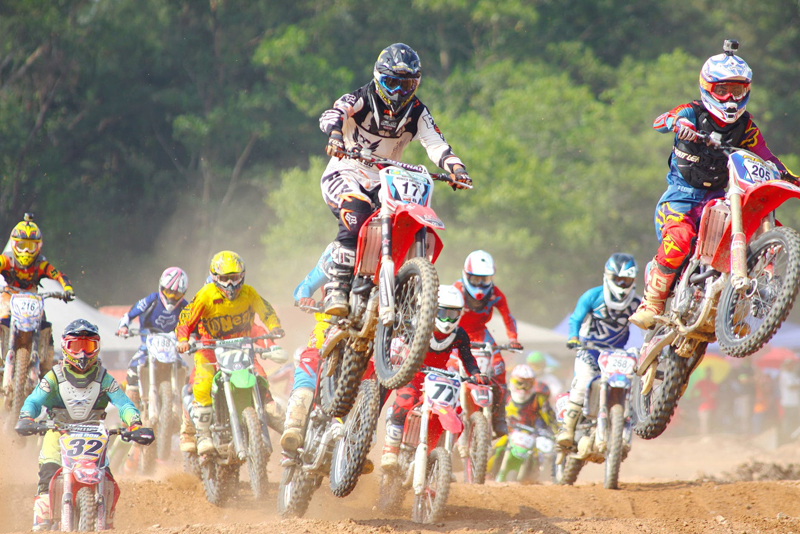Fitness of an F1 Driver

Whilst it's easy for us fans to sit back, shout at the television, and think we could do a much better job, driving a Formula 1 car isn't easy. Those twenty guys who gather each race weekend are the top drivers out there, and they have to be athletic and disciplined to get there and stay there.
To be physically fit enough to drive an F1 car for an entire season, drivers have to adjust their training to specifically match what the sport needs. The teams and drivers have personal trainers, physiotherapists and doctors on hand to monitor their condition, improve their physique and instruct them on their diet.
One of the biggest things for an F1 driver is simply surviving the heat of some of the race weekends, and the stamina required to race for two hours at a time. The first few races of a season, in Australia and Malaysia specifically, have intensely high temperatures and humidity as part of the features of the track. A driver needs to regulate his body to get through the race without losing concentration, and having enough strength to take to the podium once the race is over. Drivers can lose up to 3kg of their body weight in sweat during races, so keeping hydrated is key.
The other important item on any driver's training schedule will be improving the neck muscles. The high G forces that a driver's neck is subjected to around an F1 track means that they need to have strong neck muscles that can withstand the pressure. The majority of tracks run in the same direction, meaning one side will end up being stronger than the other, but both need to be built up, so that they can compete in the entire season. The training involves weight lifting and general fitness, but some teams have special equipment that replicates the forces of a lap in an F1 car. With the helmet on, and the equipment simulating the cornering forces, a driver will soon be up to the standard required.
The rest of the body is important as well, general fitness needs to be maintained, with strong arms to control steering, and legs to push those pedals. Weight can sometimes be an issue, with Kubica admitting he crash dieted over the winter before the 2008 season, to give them better balance in the car and more options to distribute weight. This is where the nutritionists can come in handy. Not only do they monitor a driver's overall diet, but planning what needs to be consumed on race day is just as important. You need the energy to get through two hours of racing, but nothing to make you feel full, heavy and unable to concentrate.
Racing is more than just getting in the car and putting your foot down, these drivers are working constantly, even on themselves, to achieve better results.
To be physically fit enough to drive an F1 car for an entire season, drivers have to adjust their training to specifically match what the sport needs. The teams and drivers have personal trainers, physiotherapists and doctors on hand to monitor their condition, improve their physique and instruct them on their diet.
One of the biggest things for an F1 driver is simply surviving the heat of some of the race weekends, and the stamina required to race for two hours at a time. The first few races of a season, in Australia and Malaysia specifically, have intensely high temperatures and humidity as part of the features of the track. A driver needs to regulate his body to get through the race without losing concentration, and having enough strength to take to the podium once the race is over. Drivers can lose up to 3kg of their body weight in sweat during races, so keeping hydrated is key.
The other important item on any driver's training schedule will be improving the neck muscles. The high G forces that a driver's neck is subjected to around an F1 track means that they need to have strong neck muscles that can withstand the pressure. The majority of tracks run in the same direction, meaning one side will end up being stronger than the other, but both need to be built up, so that they can compete in the entire season. The training involves weight lifting and general fitness, but some teams have special equipment that replicates the forces of a lap in an F1 car. With the helmet on, and the equipment simulating the cornering forces, a driver will soon be up to the standard required.
The rest of the body is important as well, general fitness needs to be maintained, with strong arms to control steering, and legs to push those pedals. Weight can sometimes be an issue, with Kubica admitting he crash dieted over the winter before the 2008 season, to give them better balance in the car and more options to distribute weight. This is where the nutritionists can come in handy. Not only do they monitor a driver's overall diet, but planning what needs to be consumed on race day is just as important. You need the energy to get through two hours of racing, but nothing to make you feel full, heavy and unable to concentrate.
Racing is more than just getting in the car and putting your foot down, these drivers are working constantly, even on themselves, to achieve better results.
This site needs an editor - click to learn more!
You Should Also Read:
Inside The Cockpit
Driver Safety - Clothing
Structure of a Race Weekend
Related Articles
Editor's Picks Articles
Top Ten Articles
Previous Features
Site Map
Content copyright © 2023 by Christine Blachford. All rights reserved.
This content was written by Christine Blachford. If you wish to use this content in any manner, you need written permission. Contact
BellaOnline Administration
for details.


